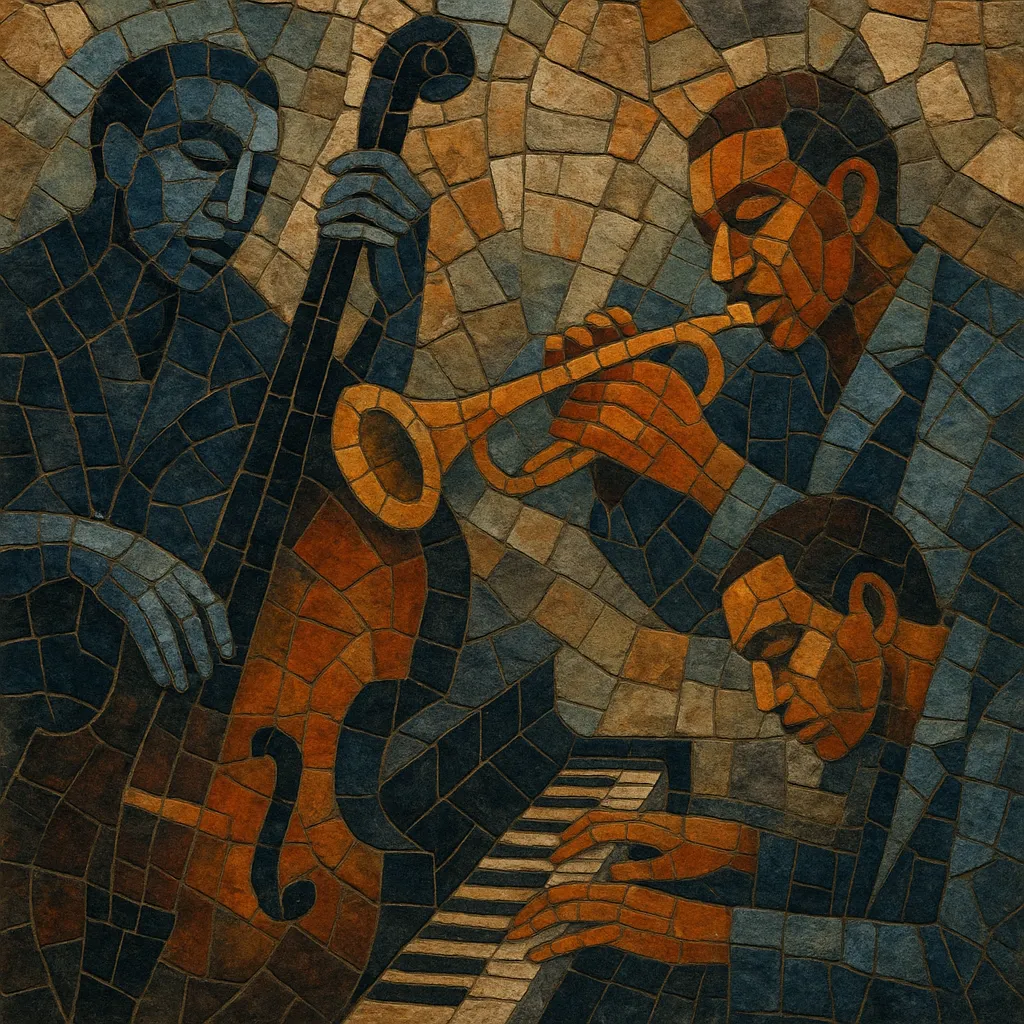
Modal jazz is a style of jazz in which improvisation and composition are organized around musical modes rather than rapid chord changes.
Instead of navigating dense harmonic progressions (as in bebop and hard bop), modal jazz often sustains a single scale or a small set of modes for long stretches, creating a spacious, open canvas for melodic development. Hallmarks include slow harmonic rhythm, pedal points or drones, vamp-based forms, and quartal/quintal voicings on piano and guitar. Improvisers focus on color, contour, and motivic variation inside a mode (e.g., Dorian, Mixolydian, Aeolian, Lydian), rather than outlining constant chord substitutions.
The sound is typically lyrical, floating, and contemplative, but it can also be turbulent and intense when rhythm section dynamics and modal tension are pushed. Canonical examples include Miles Davis’s Kind of Blue (1959) and John Coltrane’s modal vehicles such as Impressions and My Favorite Things.
By the mid-1950s, many jazz musicians sought alternatives to the increasingly dense harmonic language of bebop and hard bop. Theorist-composer George Russell’s Lydian Chromatic Concept (published in the 1950s) articulated a modal, scale-centered approach that inspired players to think beyond fast-moving changes. Pianists and arrangers had also absorbed coloristic ideas from Impressionist classical music (Debussy/Ravel), encouraging a turn toward sustained sonorities and modal colors.
Miles Davis catalyzed the shift with recordings such as Milestones (the title track hints at modal thinking) and, decisively, Kind of Blue (1959). With collaborators like Bill Evans, Cannonball Adderley, John Coltrane, and Jimmy Cobb, Davis presented pieces (So What, Flamenco Sketches) that relied on a few modes held for long spans. This opened space for melodic narrative and timbral nuance, marking a watershed in jazz improvisation.
John Coltrane expanded the modal vocabulary with Impressions (based on So What changes), My Favorite Things (soprano sax over vamped modes), and A Love Supreme’s devotional intensity. Pianists such as McCoy Tyner developed quartal voicings and powerful left-hand pedal points; drummers like Elvin Jones deepened the polyrhythmic, rolling feel that complemented modal openness. Composers/players including Herbie Hancock (Maiden Voyage) and Wayne Shorter crafted harmonically spare, mode-forward tunes that became modern standards.
Modal jazz reshaped post-bop, laid foundations for spiritual jazz, and influenced jazz fusion and jazz rock by normalizing groove- and vamp-based forms. Its modal emphasis also resonated globally, informing modal fusions (e.g., Ethio-jazz) and inspiring more open, coloristic approaches in avant-garde jazz and free improvisation. Today, modal strategies remain core tools for jazz education, composition, and performance.

